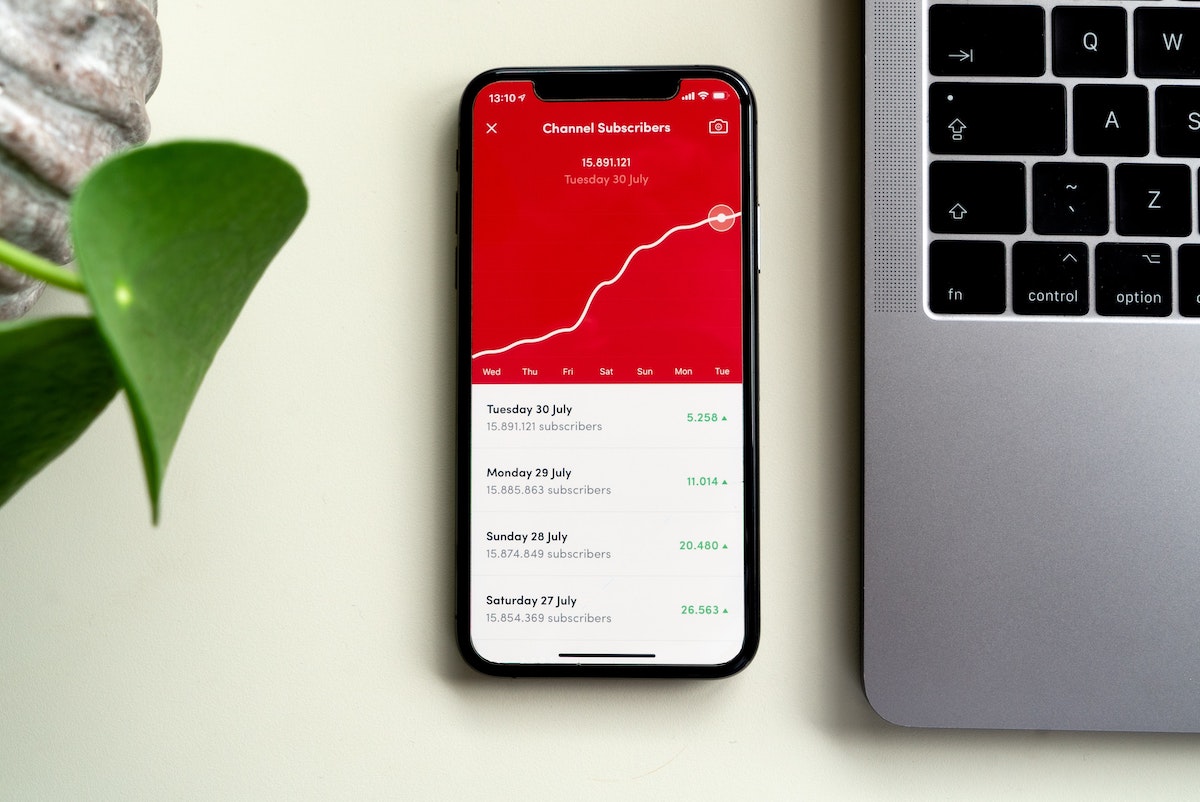Getting PAID: An intro to Angel Investing - Part 1

In this multi-part series, I am capturing my learnings as an outsider to the world of angel investing.
I am using some fundamental concepts to build a simple thought framework.
Prologue
Why these posts
A few years back, a friend was advocating angel investing (a.k.a. seed stage investing). When someone smarter than me talks about something, I tend to pay attention.
I quickly discovered that it was completely different to my core domain, software engineering. New concepts, different concepts, complicated concepts; at least in my head.
And ideas!
So many different business ideas, all with the potential to conquer the world. Or will they?
There was no manual, no documentation, no all-knowing community in StackOverflow to tell you “Nope! That won’t work”.
Just trial and error, with a feedback loop measured in years.
Hence, I decided to write down these articles.
Who they are for
To be honest, primarily for me.
I have found that my thoughts “crystallize” much better when I explain or I write them down.
Not to mention that explaining something in a digestible way forces you to understand it better yourself.
By consequence the intended audience is also someone like me.
Clueless, or with some limited knowledge in the domain of business operation. But yet interested in investing, business
foundation and the mechanics of value creation.
So to keep things simple, let’s say this is a long letter to myself, 5-6 years in the past.
What they are
These posts are my understanding of the concepts and the mechanics.
This has been acquired through reading, discussions, observations and interactions with early-stage companies.
However:
I am not a professional investor, nor a VC partner.
I am not a successful startup founder.
I have not even been an early startup employee.
So all of these are effectively opinions and observations of an outsider.
What they are not / Disclaimer
By consequence of the above, nothing in these posts constitutes investment advice. Let me repeat: Not. Investment. Advice.
Private equity is unregulated, opaque and completely illiquid.
Let’s also not forget 2 other facts:
- the startups that succeed are almost a rounding error, and
- the world is brimming with scammers.
In other words, there are much better parking spots for your money.
Also, nothing in these posts constitutes endorsement or disapproval of anything or anyone. I may offer some examples to make a point, but they are exactly that: examples.
Finally, the opinions are only mine.
They do not represent those of my present or past employers.
Credits / TL;DR
All credit goes to Nick Ogden and his very insightful presentation to SyndicateRoom. Really helped me convert my scattered thoughts into something which resembles a framework.
If you only have a few minutes to spare, just skip all these articles and watch his presentation instead.
Intro

Photo by Med Badr Chemmaoui on Unsplash
A business is a very complicated system.
A lot of different and opposing “forces” need to be kept at an optimal equilibrium. A successful business is even more so.
Contrary to the popular myth that it “only takes a good idea” to succeed, the reality is somewhat different. A
new business has a lot of things stacked up against it.
Of course, we intuitively know that a number of ventures thrive, some in a huge way. So much so, that in the last
15 years there is a global “startup cult”.
The digitization of everything has lowered the barrier to entry for new businesses. But technology alone is not enough. 1
Any new startup-in-the-making has a number of “lenses” to be viewed with. These can help determine its probability of success.
In the whole lifecycle of the business (from fledgling idea to small to large venture) all of these aspects become
equally important. But not at the same time.
Their “weight” of importance changes at different stages and for different “stakeholders”. 2
Some of these lenses have an outsized weight at the beginning, some later on.
These different aspects are captured in 4 + 1 letters:
PAID T
Or PAID Tons, if you want to remember it.
This and the follow-up articles will go through each letter and introduce each aspect.
Letter P

Photo by Lauren Fleischmann on Unsplash
The letter P stands for the What of the business.
In product management lingo this is the user Problem that it solves. In other words, how would one describe
the business in a couple of sentences? What is the core idea?
In concept-stage ventures this initial definition is one of the most important bits. For example, this is the foundational piece of info required in order to be considered for an accelerator or for seed stage investing.
This “What” be further broken down in 2 parts.
Problem

Photo by Hans-Peter Gauster on Unsplash
This probably needs little clarification. The business must be solving a real user problem.
Let’s start from the word ‘problem’.
The world around us is full of inefficiencies, sometimes to the point of injustice. These range from the most fundamental
(e.g. access to education) to the most complex aspects of life (e.g. access to financial services, buying a house).
A business idea with any hope of success must identify and attempt to address one or more of these needs.
This is not as easy as it may sound.
It requires observation of user behaviour, identification of friction points and lateral thinking, in order to arrive at
an insight for the underlying need.
Frameworks like JTBD are useful as an indication of whether the business is addressing a symptom or a real problem. 3
The second word to clarify is ‘real’. Though there is no hard-and-fast definition here.
A real problem is something which
- is causing “pain” to the user,
- …and she is maybe putting effort into overcoming it,
- there is a lack of satisfying solutions, and
- there is a number of people with the same need.
This is an initial bellwether whether there would be a market for the business’ offering.
On the other hand it makes for a dubious start when the business is trying to solve problems that are not there. These could be either insignificantly small everyday nuisances or having already been solved (and the founder does not know about). 4
Of course, like with everything in life, the answer to the above is not black and white. Technology and digitization are
great levellers, creating a 4th industrial revolution.
The founders may be ahead of their time and have identified a future user need. Or they have identified a
polished solution for a domain filled with sub-par alternatives.
Type of business
The second aspect of the “What” is the type of the business.
Not all ventures are created equal.
Depending on exactly what they are doing, they come with their own specific challenges, economics, potential returns
and required skill-sets. 5
Needless to say that
- these categories are my own classification,
- they do not cover everything under the sun, and
- not every business out there will fall neatly in a single category.
Produce

Photo by Chanita Sykes from Pexels
This is probably the simplest type of business, generating some agricultural produce (or basic manufacturing product).
Think of a vegetable or animal farm, a vineyard or manufacturing plastic straws. It may look very simple, but it may be
covering a genuine need or introducing a new variety in an underdeveloped market. 6
A produce type of business requires 2 basic things:
- Capital
A farm or a factory are capital intensive; one needs to do a lot of preparation and investment up-front. - Know-how
As a corollary of the above, one needs to have a knowledge of the domain. You cannot just create an MVP of a vineyard, if you don’t know what you are doing. It would take 4 years at best to realize you made your first mistake.
Peddle

Photo by David Emrich on Unsplash
Or else: Buy things low, sell them high. This type of business is as old as mankind itself.
Commerce is moving online at a relentless pace. With many directories of producers and suppliers, the
barrier to entry has lowered significantly, especially in the developed world. 7
Businesses in this sector no longer need a lot of capital to start and there is a glut of producers and products to pick from.
This results in a business model easy to replicate and with potentially large competition.
Almost always, this leads to low profit margins.
In order for buy-and-sell businesses to succeed and scale, they need to get some things right.
- Attract customer’s attention
A.k.a. marketing spend. In the online world this means bidding on Amazon or Google search keywords. This is effectively an “arms race”, where the deep-pocketed win. This means upfront spend and lower longer-term margins. - Big market
Being in a huge market (preferably with inelastic demand) helps a lot. The year 2020 has provided a text-book example of such a market: PPE. - Niche market
Sometimes there is a market which is so niche, that the few sellers get the buyers’ undivided attention. Like people’s personal tastes, this could be anything: from sneakers to Decentraland real-estate. - Deep knowledge
The above points can be combined into a necessary trait for the trading business itself: it needs to have deep knowledge, in order to succeed. Knowledge of tastes, knowledge of trends and knowledge of marketplace mechanics.
This will allow the business to successfully predict market trends and front-run them. - Exclusivity
Sometimes it helps to have exclusivity over a market with high demand.
For example, being a regional representative and reselling products or software. Especially if the product does not have an alternative, exclusivity keeps out the competition and creates a single supply source. - Inventory turn-over
The sooner items “fly off the shelves”, the sooner capital returns to the bank account as revenue.
Capital sitting idle, tied up in physical inventory, really hurts buy-and-sell businesses. This is especially true if the inventory has a “negative carry” (e.g. storage and maintenance costs) and “time decay” (e.g. spoils/rots). Careful inventory management and being resilient to demand shocks is key here.
This section has focused a bit on internet retail.
However at their core, many-many business models out there is a version of buy-low-and-sell-high. These can be things as
diverse as
- IT body-shops: hire person by the month, sub-contract by day
- co-working spaces: lease building by the year, rent desks by the month
- rent-to-rent schemes: rent property by the month, sub-let by room or by day
All of them are pretty much subject to the same differentiating factors outlined above.
Process

Photo by Digital Buggu from Pexels
These businesses facilitate, automate and in general make more efficient an existing process or service. I will call these “service companies” 8
The automated process can be truly anything.
Automating payment setup and collection, medical image data analysis, online stock purchases, air ticket
reservation, you name it.
These ventures have identified an aspect of everyday life or a business process which is complex, convoluted and
time-consuming. Almost always using technology as a leverage, they digitize and streamline the steps, reducing human
intervention as much as possible.
Initial costs of setting up service companies are generally lower than their “meatspace” counterparts. However, over the medium term, they still need to invest heavily in 3 things:
- Creating the service software. Chances are a COTS system does not already exist, otherwise the process automation would have already been commoditized.
- (Most importantly) Marketing and sales, and
- (More often than not) Subsidising sales prices
The reason that sales are so important is that, like with everything else, technology has lowered the barrier to entry
for everyone. Therefore after the initial insight of identifying the problem and marketing the solution, anyone can attempt to
solve it, possibly better.
This is to say that being a front-runner service company does not necessarily guarantee success by itself.
Having the first-mover advantage is good. At some-point a competitor service company will emerge, with more efficient
use of technology or better customer pricing.
The only outcome of this is that undifferentiated service companies sooner or later have a price race to the bottom. 9
Product

Photo by CardMapr on Unsplash
Let’s start with the textbook definition
a product is an object or system made available for consumer use; it is anything that can be offered to a market to satisfy the desire or need of a customer… A service is also regarded to as a type of product.
A “product business” is producing and offering something much more complicated than the physical products defined in the Produce section.
In this case a product is the clever combination, layering and packaging of simpler tools and services, so that the whole is more valuable than the sum of the parts. This could be a physical item (e.g. iPhone, Google Glass) or an online offering (e.g. Medium).
It is worth unpacking the above terms for a second.
- Combination
It usually takes some non-trivial engineering effort, software and hardware, to combine and glue together the existing “lego bricks” and then fill in any cracks. - Layering
The different components of the product cannot just be thrown together. There has to be a logic and a sequence in the way the user interacts with them. - Packaging
Packaging is not just about a glossy box and bright colors. It takes upfront, user-centric thinking to creat a sleak design and a seamless experience. Expose all the power and benefits of the underlying components, without allowing the “stitches” to appear.
The above are much easier said than done. However, the value of a product company lies in the excellent application of
these principles.
Getting these things right, unlocks a range of advantages for the business.
- Branding
There is no better differentiation from the competition, than a product which is great to use. - Customer loyalty
Other than price, the customer has little-to-no incentive to change for another product, which is perceivably inferior. 10 - Monetization
A good product is something that the customer is willing to pay for. A loyal customer is a solid base for the company to continue layering monetizable services and offerings as extras. Think of the AppStore layered on top of the iPhone.
Needless to say that product businesses are human-capital intensive, more so than others. The range and density
of talent needed for a successful product is much higher.
So, attracting, retaining and growing the right people is critical.
Platform

Photo by Carles Rabada on Unsplash
In the business model “pecking order” platforms sit at the top step.
Let’s see a textbook definition
A platform is a business model that creates value by facilitating exchanges between two or more interdependent groups, usually consumers and producers.
This definition can be somewhat misleading to the fact that some of the biggest and most recognizable companies in the world right now are platforms. Some examples, off the top of my head:
- Amazon Marketplace and Alibaba, matching merchants and buyers
- Airbnb et al, matching home-owners with vacationers
- Uber et al: matching car owners with riders
and the list goes on.
At the heart of a platform’s success is the ability to create and maintain a network effect.
The more participants on the platform (both on the supply and demand side), the better the quality of the product/service
offering.
It might be easy to think that a platform is just a beautiful website. 11
It is way, way more than that.
A platform needs to get a lot of things right, to even be mildly successful.
- Acquisition
A platform is worthless without successfully acquiring both supply (merchants, providers) and demand (buyers, consumers) in large and balanced numbers. Imbalances in the acquisition process result at best in economic distortions and at worst in participants just not bothering. - Process & Product
A platform combines the best of both a Process/Service and a Product.
But 2, 3 or multiple times; a platform is a separate service and a separate product for all different participants (merchants, consumers,…). And all of this on steroids, as the platform needs to continue expanding its reach, in order to maintain and enhance its network effect.
So all the considerations of the previous sections apply here, many times over, in order to build trust and loyalty in all participants. - Branding and marketing
Attracting large numbers of participants is not easy. Especially if they exhibit completely different characteristics as marketing cohorts. A merchant’s attention is drawn by completely different things to a customer’s. And marketing is a constant fight for attention.
In the ideal end state, the platform brand becomes synonymous with the marketplace. 12
To get there the company needs to fight a multi-front marketing war. - Customer support
People are unfortunately not rational economic and behavioral actors. A large number of people interacting with anything is a hidden liability (due to mistakes and bad behavior).
No amount of technology can be a substitute for top-notch support and problem-fixing from the get-go. - Economics
A platform is essentially its own micro-economy.
Just like any economy, of any size, it needs constant monitoring and curation, especially if pricing is determined by market forces. Curation can be anything from actor incentives to outright regulation of supply/demand. This will ensure that there are no imbalances of pricing.
Getting all of the above right is pretty damn hard.
So the term “unicorn” is quite befitting of successful platforms, just for their rarity.
Patent & Royalties

Photo by Wallace Chuck from Pexels
This is an interesting one and a bit of an outlier.
A patent / royalties business is built around one or more “discoveries”. These discoveries can be truly anything:
from a patented scientific invention in biochemistry to material engineering to mining rights to an innovative disaster
shelter.
The business then
- licenses out the manufacturing and commercialisation of the “thing” to other entities, and
- receives part of the proceeds either as a percentage of sales or as fixed royalties.
2 great multi-billion examples here are Arm (licensing computer chip designs) and Franco Nevada (licensing mining rights).
The key thing to note about royalties businesses is that they depend almost entirely on the rule of law for their
survival. Once a discovery is in the public domain (e.g. a chip design or a new gold pocket), the only thing that stops
competitors or governments from seizing it for free is the enforcement of IP law and contracts.
This can be a problem, especially if the company operates in countries offering weak protections.
Also worth noting that franchise business development is a huge part of this category.
Franchises are almost always consumer-facing, usually offering an at-first-sight simple service (e.g. MacDonalds and
American-style fast-food, DPD and last-mile logistics,…). Behind the scenes they are usually complex businesses,
due to processes, refined supply chains, financing, etc.
Almost always franchise businesses spend heavily on marketing and branding.
Customer loyalty and differentiation from competitors is key.
Patent and royalties businesses usually have a lot of upfront costs (purchasing rights, filing patents, legal expenses,…).
Depending on the business domain and the part(s) of the world in which they operate, their “discovery” may be
well-protected from the competition. Or maybe not.
In the not-so-often case they get it right, their extremely low operational overheads make them very interesting.
13
In our next episode

Photo by Charles Deluvio on Unsplash
In the next part of this series, I will cover numbers and projections, a.k.a. letter A.
Stay tuned!
Footnotes
- Otherwise all software developers would be successful business people.
- In the startup world the “stakeholders” are: Founders and Enterpreneurs, Accelerators and Incubators, Investors and VCs.
- One quick, naive, example.
Here are 2 invented problem statements / observations, for the same user in a developing country.
“The user cannot access education content on her smartphone to get a degree”
“The user cannot access education opportunities to improve her livelihood”
The second one may be more generic but contains a key insight as to the “why” the user cares about tele-education in the first place. There are many ways of improving one’s livelihood, starting with education. - It always helps if the founder(s) themselves have a personal affinity to the problem space. It is hard to know, e.g., the real needs and pains of pet owners, without having a pet yourself.
- And, funny enough, most of the business type names also start with P.
- Two examples, off the top my head:
- Until recently, the luxury hospitality sector in East Africa was looking for local certified organic produce; there was not a single local farm producing it.
- Anecdotally, the Nigerian market has an insatiable craving for balloons for festive occasions. Yet, until recently there were few to no local producers, despite the fact that rubber grows natively. Huge amounts are imported, subject to large customs duties.
- In the not-so-distant past, in order to trade, one needed to have
- a physical store to display and store the goods (i.e. upfront capital spend and unelastic, recurring expenses) and
- personal relationships with suppliers (where do you go to buy X?).
With everything found online and the ability to outsource inventory management these requirements have vanished.
- Not to be confused with the alternative meaning of the term: body-shopping and consulting.
- A great example of this race is payments in the UK.
OpenBanking has been a huge leveller, lowering the barrier-to-entry in the payments service space. This has lead to an explosion of service companies and a rapid price competition, to the point of almost being uneconomical. - As the driver of any German car can happily attest.
- A.k.a. “Build it and they will come”.
- Think how so many businesses now describe themselves as “The Airbnb of…”. Or the fact that any form of ride-sharing is an “uber”. What does this say about the dominance of these platform brands?
- For example, Franco Nevada has a (admittedly frothy) market cap of $35 billion with only 29 employees (as of Nov 2020).
